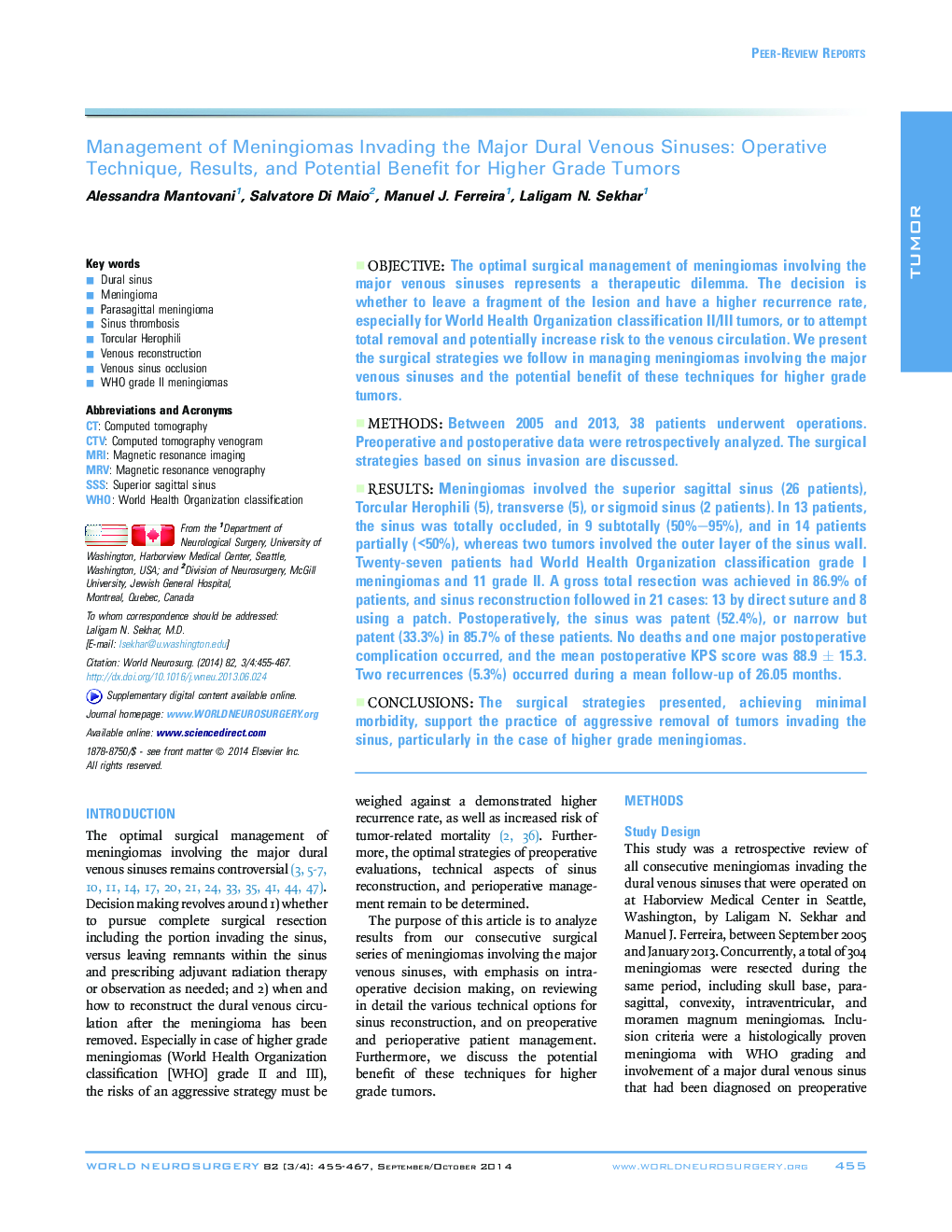| Article ID | Journal | Published Year | Pages | File Type |
|---|---|---|---|---|
| 3095452 | World Neurosurgery | 2014 | 13 Pages |
ObjectiveThe optimal surgical management of meningiomas involving the major venous sinuses represents a therapeutic dilemma. The decision is whether to leave a fragment of the lesion and have a higher recurrence rate, especially for World Health Organization classification II/III tumors, or to attempt total removal and potentially increase risk to the venous circulation. We present the surgical strategies we follow in managing meningiomas involving the major venous sinuses and the potential benefit of these techniques for higher grade tumors.MethodsBetween 2005 and 2013, 38 patients underwent operations. Preoperative and postoperative data were retrospectively analyzed. The surgical strategies based on sinus invasion are discussed.ResultsMeningiomas involved the superior sagittal sinus (26 patients), Torcular Herophili (5), transverse (5), or sigmoid sinus (2 patients). In 13 patients, the sinus was totally occluded, in 9 subtotally (50%–95%), and in 14 patients partially (<50%), whereas two tumors involved the outer layer of the sinus wall. Twenty-seven patients had World Health Organization classification grade I meningiomas and 11 grade II. A gross total resection was achieved in 86.9% of patients, and sinus reconstruction followed in 21 cases: 13 by direct suture and 8 using a patch. Postoperatively, the sinus was patent (52.4%), or narrow but patent (33.3%) in 85.7% of these patients. No deaths and one major postoperative complication occurred, and the mean postoperative KPS score was 88.9 ± 15.3. Two recurrences (5.3%) occurred during a mean follow-up of 26.05 months.ConclusionsThe surgical strategies presented, achieving minimal morbidity, support the practice of aggressive removal of tumors invading the sinus, particularly in the case of higher grade meningiomas.
